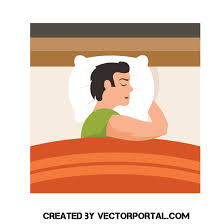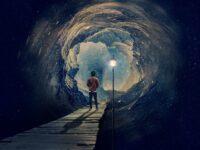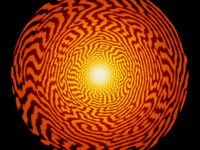Everybody dreams. Whether we remember their intricate plots or feel them slipping away the second we wake, sleep science has long known that all humans dream. Many have experienced the dread of sprinting at a snail’s pace through hellishly personalized nightmares, others discovering fantasy worlds where human flight and super strength are made possible. However, regardless of how different our dreams may be, nearly all dreamers are an audience to their own illusions, grabbing first-person seats to a story they have no say in choosing. But what if dreamscapes weren’t out of our control? What if we could snap ourselves awake without losing the ability to fly or even play god in our nighttime storylines? That’s how lucid dreaming is defined by Dr. Ursula Voss and her team: “the experience of achieving conscious awareness of dreaming while still asleep.”
Lucid dreaming, despite its early controversy and dispute of legitimacy, has been accepted as a known phenomenon for centuries, with its first mention by Aristotle in the fourth century BCE. The term “lucid dream” itself, however, was coined as recently as 1913 by Dutch psychiatrist Frederik Van Eeden, who himself experienced both lucidity and its initial skepticism. In his recollection included in the Proceedings of the Society for Psychical Research, Van Eeden wrote of how “many authors will not accept my definition [of lucid dreaming], because they deny the possibility of complete recollection and free volition in a dream.” In a modern era more receptive to lucidity, sleep studies have revealed that lucid dreaming is linked with rapid eye movement (REM) sleep, the fourth and final stage of the human sleep cycle involving a “wakeful” body state critical to the development of concentration and memory. Dr. Benjamin Baird of the University of Wisconsin-Madison and his team found “higher-than-average levels of physiological activation during REM sleep” when reviewing electroencephalography (EEG) results from their study utilizing lucid dreamers. The association of lucid dreaming with a specific segment of sleep has provided a resolution to the skepticism that initially clouded the inclination to study the phenomenon.
Research has taken an obvious interest in lucidity in recent decades and findings have been increasingly progressive. But the question may arise, how is it possible to communicate with someone while they’re asleep? How are scientists drawing conclusions about an individual’s dream awareness while they’re snoozing away on a “research” mattress? The current gold-standard method of lucid dream signaling in research settings is called left-right-left-right (LRLR) eye movement. Researchers are able to note the precise moment when dreamers enter a lucid state by identifying the outlined action using electrooculograms (EOG). This method was discussed in a 2018 study headed by Stanford University’s Stephen LaBerge and Baird. While awake, participants were instructed to repeat the ocular movements once they’ve achieved and recognized their awareness during a dream. Researchers can then accurately monitor when dreamers carry out pre-sleep tasks in their lucid state, which are confirmed by participants’ dream recollections once they wake. The method was utilized by Karen Konkoly, a cognitive neuroscientist at Northwestern, in which “researchers spoke yes-or-no questions or math problems in the sleepers’ ears” once they signaled lucidity. This 2021 study yielded unprecedented results in which “29 total correct responses came from six different people” over 158 attempts.
“Lucid dreaming techniques are being considered for potential therapeutic effects that could benefit those struggling with chronic and recurring nightmares, especially those associated with PTSD, by exercising control over their dream actions.
There are, however, continued limitations to studying lucid dreams, one of the most prominent being the lack of a sample population available for researchers to study. A 50-year analysis of sleep research showed that only about 55% of individuals have reported experiencing a lucid dream once in their entire lifetime, with 23% falling into lucidity once a month and less than 1% pioneering their dreams more than once a week. Even once researchers are able to produce a significant sample size of dreamers for their study, consistently inducing lucidity has proven to be an additional obstacle of uncertainty.
As the science continues to broaden and new observational techniques are being trialed for more considerable implementation, clinical applications have already entered the discussion for future directions. Lucid dreaming techniques are being considered for potential therapeutic effects that could benefit those struggling with chronic and recurring nightmares, especially those associated with PTSD, by exercising control over their dream actions. The research behind lucid dreams is constantly evolving, and with its recent boom in the world of sleep science, the advancements of today are sure to be only a gateway into a future of further understanding.
- Sleep (2009). DOI: 10.1093/sleep/32.9.1191
- Neuroscience & Biobehavioral Reviews (2019). DOI: 10.1016/j.neubiorev.2019.03.008
- Sleep (2022). DOI: 10.1093/sleep/zsab294
- Consciousness and Cognition (2016). DOI: 10.1016/j.concog.2016.06.002
- Nature Communications (2018). DOI: 10.1038/s41467-018-05547-0
- Cell Biology (2021). DOI: 10.1016/j.cub.2021.01.026






